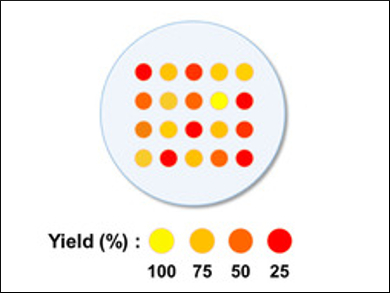Palladium-catalyzed cross-coupling reactions are widely used in organic synthesis. During the optimization of the reaction parameters, such as the catalyst, ligand, additive, solvent, and reaction time, the speed of analyzing the reaction results is important. Although many high-throughput screening (HTS) methods have been developed, they are usually expensive or need specialized compounds for each analyzed reaction, because they focus on analyzing the yield of the final product. Paper-based chemosensors have the advantages of being portable, equipment-free, fast, and cheap.
Min Su Han, Gwangju Institute of Science and Technology, Republic of Korea, Sunwoo Lee, Chonnam National University, Gwangju, Republic of Korea, and colleagues have developed a paper-based colorimetric sensor for the HTS of cross-coupling reactions involving aryl bromides. The sensor was prepared by applying a 4-(2-pyridylazo)resorcinol (PAR)-Hg2+ complex to an octadecyltrichlorosilane-modified paper with hydrophobic barriers and hydrophilic spots.
The reaction mixtures resulting from the screened coupling reactions were diluted and dropped onto the spots of the paper sensor. The red color of the spot was converted to yellow (example pictured) by a ligand exchange between PAR and the bromide ions generated from the coupling reactions. This color change was used to determine the reaction conversion. The suitability of the sensor was demonstrated using Stille, Suzuki, and Heck coupling reactions, direct arylations, and decarboxylative couplings. The measured conversion showed a high correlation with that measured by gas chromatography (GC).
- Organosilane-Patterned Paper-based Colorimetric Sensors for High-Throughput Screening of Cross-Coupling Reactions with Aryl Bromides,
Yujeong Son, Suji Lee, Han-Sung Kim, Min Sik Eom, Min Su Han, Sunwoo Lee,
Adv. Synth. Catal. 2018.
https://doi.org/10.1002/adsc.201800558




